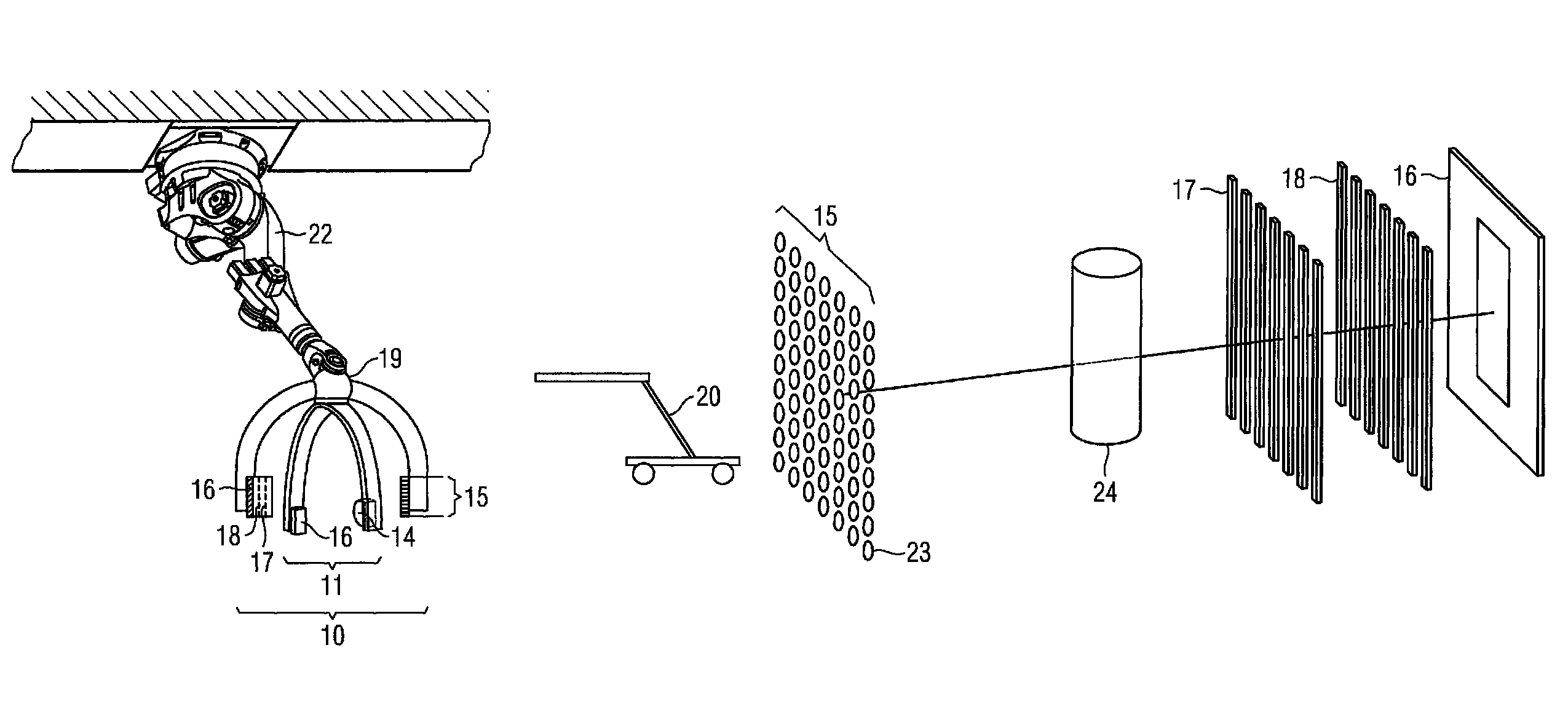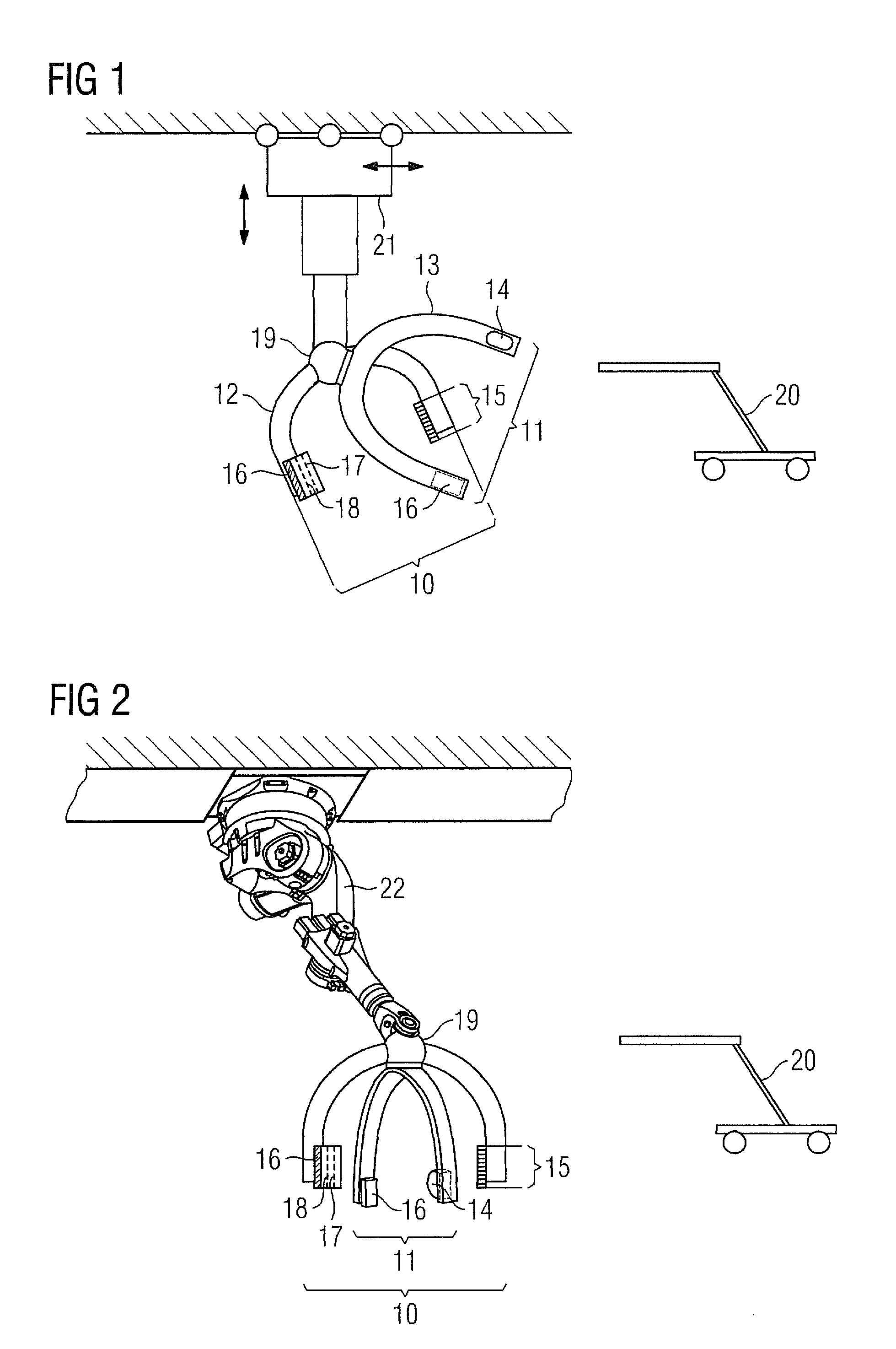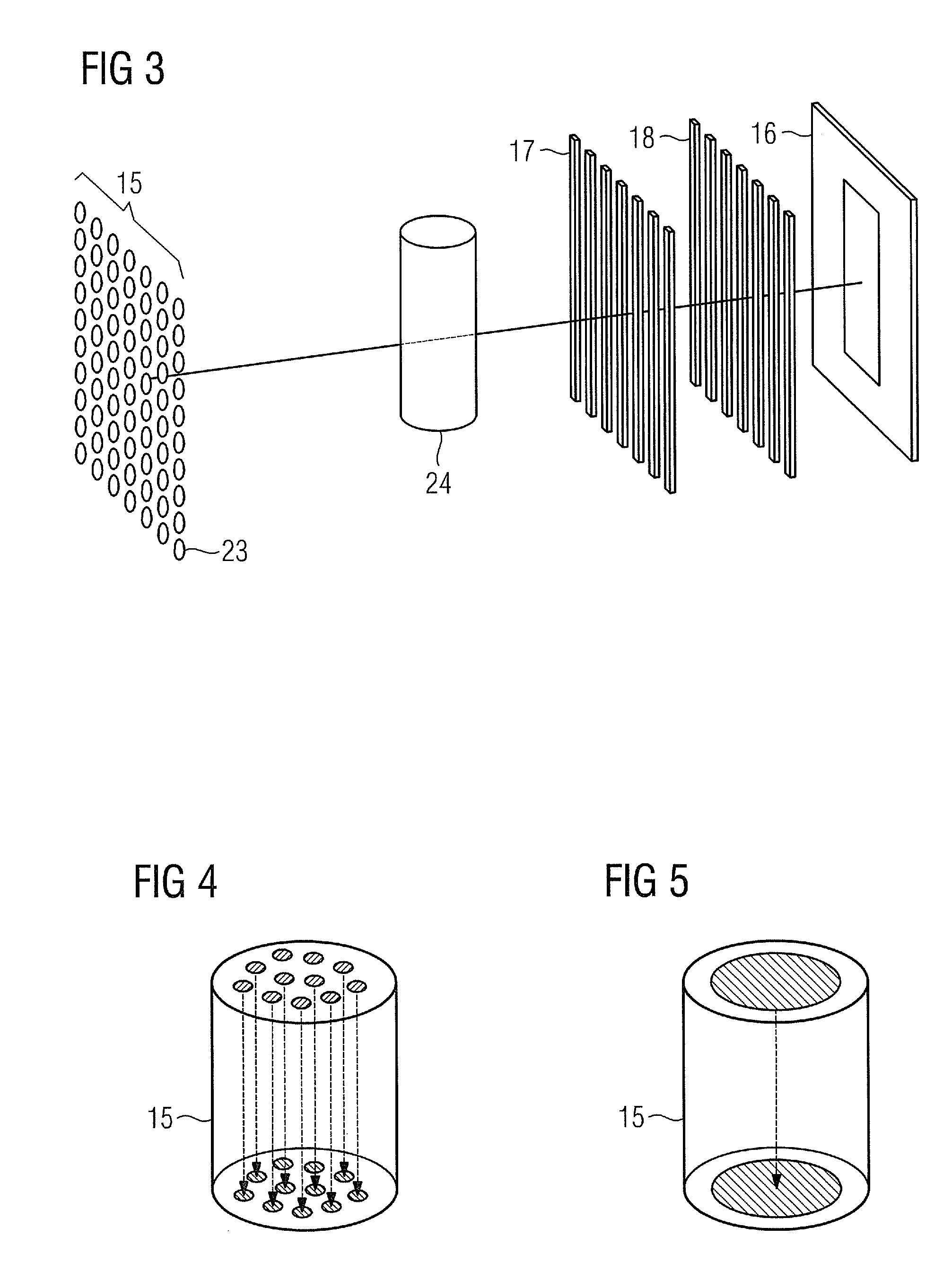Biplane X-ray imaging system
a x-ray imaging and plane technology, applied in the field of plane x-ray imaging system, can solve the problems of insufficient mobility of c-arm x-ray machines using fluoroscopy imaging, inadequate for all applications, etc., and achieve the effect of good, quick and simple adjustmen
- Summary
- Abstract
- Description
- Claims
- Application Information
AI Technical Summary
Benefits of technology
Problems solved by technology
Method used
Image
Examples
Embodiment Construction
[0028]FIG. 1 and FIG. 2 each show an inventive biplane X-ray imaging system having two recording units disposed in different planes, a first recording unit 10 embodied for phase-contrast X-ray imaging and a second, “conventional” recording unit 11 embodied for fluoroscopy imaging. The two recording planes are offset with respect to each other by e.g. 90°.
[0029]The second, “conventional” recording unit 11 in the form of a second C-arm 13 has a conventional X-ray tube assembly 14 and an X-ray detector 16 which can be for example a solid-state-based flat-panel detector. Instead of the conventional X-ray tube assembly 14, a field-emission tube assembly 15 having a single field-emission cathode—as shown in FIG. 5—or a field-emission tube assembly 15 having a plurality of field-emission cathodes—as shown in FIG. 4—can also be used. It is also possible to use a plurality of field-emission tube assemblies 15, each having one field-emission cathode. In the case of the second recording unit 1...
PUM
| Property | Measurement | Unit |
|---|---|---|
| biplane X-ray imaging | aaaaa | aaaaa |
| fluoroscopy imaging | aaaaa | aaaaa |
| 3D imaging | aaaaa | aaaaa |
Abstract
Description
Claims
Application Information
 Login to View More
Login to View More - R&D
- Intellectual Property
- Life Sciences
- Materials
- Tech Scout
- Unparalleled Data Quality
- Higher Quality Content
- 60% Fewer Hallucinations
Browse by: Latest US Patents, China's latest patents, Technical Efficacy Thesaurus, Application Domain, Technology Topic, Popular Technical Reports.
© 2025 PatSnap. All rights reserved.Legal|Privacy policy|Modern Slavery Act Transparency Statement|Sitemap|About US| Contact US: help@patsnap.com



